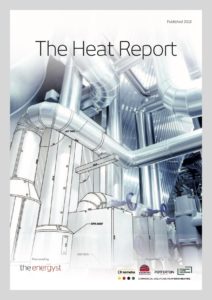 Cadent has published plans to inject hydrogen into its distribution network in the North West while capturing and storing carbon in depleted gas fields in Liverpool Bay.
Cadent has published plans to inject hydrogen into its distribution network in the North West while capturing and storing carbon in depleted gas fields in Liverpool Bay.
The UK’s largest gas distribution network operator, formerly owned by National Grid, says the £0.9bn HyNet project, if given support by the government and allowed by the regulator, could be operational by the mid 2020s.
The plan is to produce hydrogen from natural gas via a process called auto-thermal reforming (ATR). This separates hydrogen from methane, with carbon dioxide the bi-product.
The carbon dioxide requires capture and storage (CCS) forever if hydrogen from natural gas is to be considered low carbon.
Cadent thinks 93% of the CO2 can be captured from a hydrogen conversion plant in Cheshire and transported via repurposed gas pipelines to depleted gas fields Liverpool Bay. The firm believes around 1.5m tonnes of CO2 a year could be stored from the project, with the ENI-owned Liverpool Bay site able to contain around 150m tonnes of CO2.
Cadent thinks some of the CO2 can also be used. Though neither the report nor associated website spells out how, CO2 is used around the world for enhanced oil recovery.
Homes, industry and transport
A blend of up to 20% hydrogen would be injected into the existing gas grid for household and business use, says Cadent.
The company also plans to covert ten large industrial sites to run on up to to 100% hydrogen, which it will pipe to directly. Cadent would also take and store carbon dioxide already separated by local industry via pipeline.
As well as helping to decarbonise heavy industry, it says creating hydrogen infrastructure may also drive uptake of hydrogen vehicles by facilitating fuelling stations along the network route.
Costs and funding
Cadent claims the £920m project would deliver CO2 abatement for £114 per tonne, though it says this has the potential to fall.
Cadent, now mostly owned by a consortium that includes Macquarie and the Qatar Investment Authority, says it will need appropriate funding mechanisms or subsidies to undertake the project.
This could be via a levy on gas bills. Whereas electricity customers pay levies on bills to pay for decarbonisation, gas customers have not yet contributed to meeting the UK’s emission, Cadent notes.
The report moots a hybrid funding structure, whereby gas customers pay for the hydrogen and CO2 capture elements of the project, and taxpayers, potentially through Industrial Strategy funding, foot some of the cost of the transport, storage and industrial conversion elements.
Cadent points out that if it goes ahead, the HyNet project would be the world’s first CCUS project at commercial scale. It notes that if government did not provide funding support, “it will need to take on the key risks for CCUS chain failure, as this cannot be borne by the private sector”.
See the report here.
 Challenges and opportunities around hydrogen and CCS are discussed in The Energyst’s latest Heat Report. It is available as a free download here.
Challenges and opportunities around hydrogen and CCS are discussed in The Energyst’s latest Heat Report. It is available as a free download here.
Related stories:
Can wind, rocks, coal mines and salt decarbonise heat?
Eon boss: Renewable power is ‘done’, now for heat and transport
Hydrogen for heat ‘will create anchor carbon capture and storage projects’
Climate Change Committee calls for ‘proper’ hydrogen trials
Click here to see if you qualify for a free subscription to the print magazine, or to renew.
Follow us at @EnergystMedia. For regular bulletins, sign up for the free newsletter.



